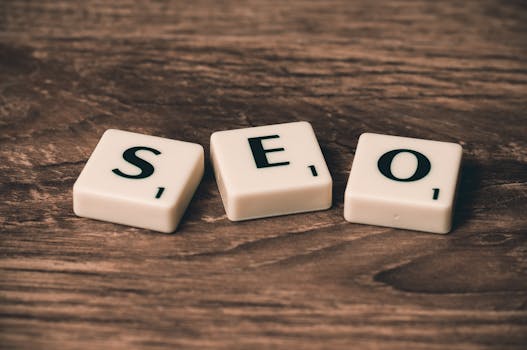Alt Text For Background Image
Common Mistakes to Avoid When Adding Alt Text
One of the biggest mistakes I see is using generic alt text. Descriptions like ‘image’ or ‘photo’ add zero value. Alt text should convey what’s in the image and why it’s relevant to the surrounding content.
Another common error is writing excessively long descriptions. While it’s important to be descriptive, alt text should be concise. Aim for 125 characters or fewer, allowing screen readers to convey important information without overwhelming users.
Overloading alt text with keywords is a mistake I cringe at. While keywords are vital for SEO, cramming them into alt text only hinders user experience. Google is smart enough to rank based on relevance, not keyword stuffing.
Not including alt text for decorative images is an oversight. If an image doesn’t convey content or meaning, use an empty alt attribute (alt=””). This approach signals screen readers to skip over decorative images, improving accessibility.
Ignoring the context of the image adds to the problem. Alt text should relate to the content on the page. Take a moment to think about how the image fits into the narrative. This simple practice enhances relevance and user engagement.
Failing to update alt text as content changes is something I see far too often. As your content evolves, so should your alt text. It’s a good habit to revisit images and ensure the descriptions match the surrounding text.
Finally, neglecting to test your alt text can lead to missed opportunities. Use screen readers or tools to check how accessible your images are. This testing helps to ensure that your alt text serves its intended purpose, reaching a wider audience.
Keeping Up with SEO Trends: The Future of Alt Text
Alt text is evolving and it’s crucial for SEO aficionados to recognize its growing significance. Alt text serves as an essential element for web accessibility and is gaining traction as a ranking factor in search engines. It’s more than just a description of an image; it offers context and meaning to both search engines and users who rely on screen readers. As we peek into the future of SEO, those who master alt text will find themselves ahead of the curve.
So, what does the future hold for alt text? Firstly, the integration of AI and machine learning will redefine how we approach this feature. Automated systems are becoming increasingly adept at understanding images, which means that simply stuffing alt text with keywords is becoming less effective. Instead, crafting descriptive, relevant, and contextually appropriate alt text is essential for maintaining a competitive edge.
Another trend to watch is the emphasis on user experience. Search engines are prioritizing sites that offer valuable, informative content. Consequently, alt text should not only be keyword-rich but also add real value. If your alt text provides insight or enhances comprehension of the image, you’re not just optimizing for search engines—you’re enriching the user’s experience.
Furthermore, video content is on the rise, and this trend requires adapting alt text practices. With more websites incorporating video, providing captions and descriptive text will become just as vital as traditional image alt text. Essentially, the future of SEO includes a broader interpretation of accessibility.
In summary, staying informed about these shifts in alt text strategy is non-negotiable for anyone looking to improve their SEO strategy. This evolution presents an opportunity to enhance both visibility and accessibility, a win-win situation. Embrace these changes and integrate them into your SEO practices for a robust online presence.
SEO Benefits of Proper Alt Text Usage
Using proper alt text is essential for enhancing your website’s SEO performance. Alt text serves multiple purposes, and neglecting it is a missed opportunity. For starters, it helps search engines understand the content of images, which is crucial since they can’t ‘see’ images like we do. The more context you provide, the better your chances are for ranking in image search results. This means your alt text can drive additional organic traffic.
Moreover, alt text enhances accessibility. Users with visual impairments rely on screen readers to interpret images, so a well-written alt text improves their experience. This aspect not only aligns with ethical practices but contributes positively to SEO. Search engines prioritize websites that are user-friendly, and having accessible content can give you an edge over competitors.
It’s also worth noting that keyword optimization is crucial. Including relevant keywords in your alt text can provide a boost, but it should be done naturally. Overstuffing keywords may lead to penalties. The key is to balance optimization with clarity. The primary goal of alt text should still be to describe the image accurately.
Lastly, alt text can enhance engagement. Well-optimized images, when coupled with strong alt text, can lead to longer page visits and lower bounce rates. Increased engagement signals to search engines that your content is valuable, further improving your rankings. Alt text is a straightforward yet powerful tool that can significantly impact your SEO strategy if used wisely.
Best Practices for Writing Alt Text for Background Images
Writing effective alt text for background images is critical for improving accessibility and enhancing SEO. Background images often carry visual context that text alone can’t convey, so it’s essential to assist users who rely on screen readers and improve your website’s search engine ranking. Here are some best practices I firmly believe in when it comes to crafting alt text for background images:
Firstly, keep it concise and descriptive. Aim for a brief yet informative description of what the image represents, straying away from generic phrases like “background image”. Instead, specify the key visual elements that contribute to the content on the page.
Secondly, avoid keyword stuffing. While integrating keywords can be beneficial for SEO, sacrificing clarity for the sake of SEO will only hurt your user experience. Focus on accurately describing the image instead of cramming in irrelevant keywords.
Another point to emphasize is that not all background images require alt text. If an image is purely decorative and does not convey any meaningful information, you can use an empty alt attribute (alt=””). This practice helps screen readers skip over non-essential elements, enhancing the overall browsing experience for visually impaired users.
Make use of contextual information surrounding the image. If the background complements a particular section of text, draw connections between the image and the content. This alignment provides a clearer understanding for users and helps search engines recognize the relevance of the image.
Consistently evaluate your alt text strategy across the site. Conducting regular reviews of your alt text practices can reveal areas for improvement and ensure you’re meeting both accessibility standards and SEO goals.
Adhering to these best practices can significantly enhance both user experience and search engine performance. Each piece of alt text contributes to overall accessibility efforts and helps your website reach a broader audience.
Nov 18, 2010 … If you need to put an image in the page that has meaning then use an IMG element and give it an alternative text in the alt attribute. I agree …
For ambient images that are CSS, it is a courtesy to provide alternate text. When doing so, place image in its own empty <span> with an aria-label and role="img …
Alternate text for background images, alt text accessibility
Mar 1, 2021 …Site URL: https://www.bondprosper.com/london-property-market Title says it all, How do you add Image Alt Text to Section Backgrounds?
How do you add Image Alt Text to Section Backgrounds? – SEO …
Answer. CSS background images should not have alternative text if the image is truly a background image. Decorative (i.e removing it from the page causes no …
How do I add alt text to background images? | Accessible Web
Dec 6, 2018 … I'm using lots of background images on a site because the image element is quite limited to use for functions such as filling the whole height …
Is it possible to add an alt tag to a background image? – Support …
May 20, 2022 … A Portfolio HTML5 responsive website template for your Portfolio website. Customize it with Webflow's web design tools and connect it to our …
What is the best way to handle alt text for a background image with a …
Page Content. Concise Description; Empty ALT Text; Caption; Background Images; Avoid Text Box; Description vs. Title; Office 365 Desktop; Online …
Image ALT Text in Microsoft Office – Accessibility at Penn State
Oct 9, 2018 … Yea, the title tag is not the same as the alt tag when it comes to SEO. In the case of an image not showing up when a page loads, the title tag …
Alt tags for background images for SEO – SEO – Forum | Webflow
Case Studies: Successful Implementation of Alt Text
Alt text is a game changer. Many website owners underestimate its importance, yet I’ve seen firsthand the benefits it brings in terms of SEO and accessibility. Let’s explore a few case studies that highlight its effective implementation and the tangible results achieved.
One company that stands out is a leading e-commerce platform. After conducting an internal audit, they realized their product images lacked proper alt text. They made a focused effort to update all images with descriptive alt text that not only described the product but included relevant keywords. The result? Their search rankings for several key terms improved significantly within weeks, leading to a remarkable increase in organic traffic.
Another compelling case comes from a travel blog I follow. The owner had gorgeous images showcasing stunning destinations, but none had alt text. After implementing a strategy to add descriptive and keyword-rich alt text, they noticed a steady rise in search engine visibility. This led to a 50% increase in overall site traffic and a higher engagement rate from visually impaired users who could now understand the content better.
A nonprofit organization aimed at spreading awareness about environmental issues also benefited from alt text. They revamped their site with clear and concise alt text for all visuals, which aligned with their mission. Not only did they receive positive feedback from users, but their search engine ranking also improved, helping them reach a larger audience.
These examples demonstrate that implementing effective alt text isn’t just a technical task; it’s an opportunity to enhance user experience and boost SEO. Proper alt text is a simple yet powerful tool that should not be overlooked.
Unhelpful: Image has no alt text, but is not set to decorative, so screen readers read the file name of the image instead. Background Images. Many programs skip …
… background images do not require alt text. If you use a background image that does add meaning to the page, it should be coded as a regular image with alt text.
Alternative Text for Web Images | Communication Standards | NREL
/root/Image1/BackgroundImage/img/@alt. Licensee Portal. /root/Image2 … Text 988 – 24/7 Crisis & SupportText 988 Suicide & Crisis Lifeline. About Nevada
Section 508 requires all images on Office of Energy Efficiency and Renewable Energy websites and applications to have alt text.
Understanding the Role of Alt Text in SEO
Alt text is critical for both accessibility and SEO. When I optimize images on my website, I focus on crafting meaningful alt text that accurately describes the content of the image. This practice serves multiple purposes. First, it enhances accessibility for visually impaired users who rely on screen readers to understand my content. Second, it provides search engines with context. Many people overlook how alt text can impact image search rankings, which is a missed opportunity for driving additional organic traffic.
In my experience, the alt text should be concise yet descriptive enough to convey the essence of the image. Using relevant keywords can also give your content a nice SEO boost, but I steer clear of keyword stuffing. A well-crafted alt text can act as a mini description, helping search engines index your images effectively.
Another crucial aspect to consider is the use of alt text for e-commerce sites or any site relying on visual content. Good alt text can directly influence purchasing decisions. Customers can’t physically handle products online, so images often help make or break a sale. Including clear descriptions can solve this issue and improve user experience.
It’s essential to remember the impact of alt text on page loading speed and user engagement metrics. A fast-loading site tends to rank better, and images that are correctly tagged with alt text help search engines understand the page’s elements without slowing down load times. This can ultimately improve your SEO efforts significantly.
Be mindful of the character length as well; I aim for a maximum of 125 characters to keep it snappy. Keeping it natural and descriptive is vital. Alt text may seem like a small detail in the vast world of SEO, but it can generate significant dividends in terms of accessibility, rankings, and user experience. It’s one of those areas where you can make a substantial impact without a massive investment of time or resources.
Impact of alt text on user engagement
Exploring the significance of alt text in enhancing the user experience and boosting engagement rates.
- Alt text significantly improves accessibility for users with visual impairments. This is not just a compliance issue; it reflects a commitment to inclusivity, allowing everyone to engage with your content.
- Effective use of alt text can enhance SEO rankings. Search engines rely on this textual information to understand your images, leading to improved visibility in search results.
- Alt text contributes to higher engagement rates, as descriptive text can capture attention. Engaging descriptions can entice users to explore further, reducing bounce rates.
- Clear and concise alt text communicates your content’s message more effectively. When users know what to expect, they are more likely to interact with your website.
- Using relevant keywords in alt text can provide context to search engines. This practice can increase organic traffic by aligning your images with user queries.
- Alt text can improve load times for pages with sighted users. By providing a succinct description, users can decide if they want to view the image or not, enhancing their experience overall.
Nov 24, 2022 … My job: paint all the backgrounds! No alt text provided for this image. The total background count was 50 and I did both the layout and …
Sep 15, 2022 … No alt text provided for this image. Join the Teams meeting and … I start by adding an image as background. No alt text provided for …
Key elements to include in your alt text
Compelling alt text is essential for accessibility and SEO; it helps search engines and users understand your images better. Here are key elements to include:
- Describe the image accurately.
- Your alt text should reflect the content of the image precisely. Avoid vague descriptions; clarity is key in enhancing both user experience and SEO rankings.
- Incorporate relevant keywords.
- Including keywords helps search engines index your images better. However, it’s crucial to integrate them naturally; keyword stuffing only complicates your message.
- Keep it concise.
- Aim for one to two sentences maximum. Overly lengthy descriptions can be overwhelming and are often truncated, failing to deliver their intended message.
- Consider the context.
- Ensure that your alt text connects meaningfully with the surrounding content. This enhances relevance and improves the chances of better rankings.
- Avoid using ‘image of’ or ‘picture of’.
- These phrases add no value and simply waste space. Get straight to the point and describe what the image conveys.
A/B Testing Your Alt Text for Improved Results
A/B testing your alt text can drastically impact your website’s performance. Many webmasters overlook this crucial element, but it plays a significant role in SEO and user experience. By experimenting with different alt text versions, I have seen firsthand how slight adjustments can lead to improved engagement and rankings.
Let’s get specific. Consider testing two different pieces of alt text for the same image. For example, one could be specific, like “A cozy coffee shop interior with patrons enjoying their drinks,” while another might read “Interior view of a coffee shop.” I’ve found that the first option, being more descriptive, tends to rank better in image searches.
Testing alt text can also enhance accessibility. Descriptive text in images provides visually impaired users with a richer browsing experience. When testing, track metrics like click-through rates and user interactions to measure success clearly. If a particular phrase boosts engagement, you’ll want to optimize accordingly.
Another thing I learned is that simplicity often wins. Overly complex descriptions can confuse search engines. Keep your alt text straightforward and relevant. Less fluff means a higher probability of ranking.
Take a systematic approach when A/B testing. Change one variable at a time, whether it’s the wording or length. This will provide clarity on what works and what doesn’t. Also, run tests for a significant duration to gather enough data, ensuring that your findings are statistically relevant.
I encourage you to invest time in A/B testing your alt text. The insights gained from these tests can refine your overall SEO strategy and lead to tangible benefits for your website.
How Alt Text Affects Accessibility
Alt text is vital for web accessibility. It’s not just a nice-to-have feature; it directly impacts how users with visual impairments interact with images on the internet. In my experience, alt text helps screen readers describe images to users, making the web a more inclusive space.
Many people underestimate the importance of including descriptive alt attributes for images. I’ve seen far too many websites neglect this aspect, thinking it’s irrelevant for SEO. However, good alt text does double duty; it improves accessibility and boosts search engine optimization. Search engines rely on alt text to understand the context of an image, which can aid in image search rankings.
Writing effective alt text isn’t about overstuffing with keywords but providing a clear and concise description of what an image conveys. A simple tag like “image of a dog” doesn’t cut it. Consider phrases like “a golden retriever playing fetch in a park on a sunny day.” This not only helps visually impaired users but also provides richer content for search engines.
Many users have no idea how beneficial alt text can be for their websites. They focus heavily on layout and color schemes while overlooking accessibility features. Obviously, anyone looking to boost their site’s effectiveness should consider all users. Accessible design leads to better user engagement and a broader audience.
In a world increasingly governed by digital experiences, it’s imperative to prioritize every user’s ability to access information. Alt text serves as a simple yet powerful way to show that your website cares about inclusivity. When users can enjoy your site regardless of their abilities, it reflects positively on your brand and enhances user satisfaction.
Tools to Help Optimize Alt Text
In the world of SEO, alt text is often overlooked, but I strongly believe it’s an essential component for both accessibility and search engine ranking. Choosing the right tools can enhance your alt text strategy tremendously. Here are a few that I’ve found incredibly effective.
1. Image SEO Tools – Tools like Moz and SEMrush offer features specifically designed to optimize images. They provide insights into how well your images are performing and suggest improvements for alt text.
2. Screaming Frog – This website crawler allows you to analyze alt text across your site quickly. You can see missing alt tags, duplicate tags, and length issues to ensure you’re on the right track.
3. Accessibility Checker – Tools such as WAVE and Axe can evaluate your website for accessibility issues, including alt text. These tools not only help you comply with standards but also improve user experience.
4. Alt Text Generator Plugins – If you’re using WordPress, plugins like WP Accessibility and SEO Friendly Images can streamline the process. They automate the generation of alt tags based on image titles or content, saving you time.
5. Google Search Console – Leveraging the data from GSC can provide insights into how your images are performing in search. It can give you direction on where to enhance your alt text based on impressions and clicks.
By integrating these tools, optimizing alt text becomes much more feasible and effective. Remember, clear and descriptive alt text benefits both users and search engines equally.
Why Background Images Need Alt Text
Background images deserve alt text, and here’s why. You might think that because they’re not central focal points of your webpage, they don’t require it. That’s a major misconception. Search engines cannot interpret images like humans can. They rely heavily on alt text to understand what’s presented. By providing descriptive alt text, you’re giving essential context which can aid in proper indexing and enhance your site’s SEO.
Accessibility is another key reason. Blind and visually impaired users depend on screen readers to describe content. If your background images lack alt text, you’re excluding a portion of your audience and violating web accessibility standards. If you want your site to be genuinely inclusive, using alt text is non-negotiable.
Let’s not forget about the power of keywords. Incorporating relevant keywords in your alt text can enhance your site’s visibility on search engines. However, make sure you’re not stuffing keywords; relevance is key. Search engines can penalize keyword stuffing, which can negatively impact your rankings.
Ultimately, neglecting alt text for background images is a missed opportunity to boost your SEO and reach a broader audience. Stop overlooking this crucial element of optimization. If you aim to improve user experience while enhancing your search visibility, ensure every image on your page—background or otherwise—has appropriate alt text.
Checklist for Writing Effective Alt Text
Creating effective alt text is essential for web accessibility and SEO. Here’s a checklist that breaks down what to remember as you write your alt text.
- Be concise but descriptive. Your alt text should provide enough detail to convey the image’s purpose without being overly verbose. Aim for 125 characters or less.
- Include relevant keywords. Incorporating keywords naturally into your alt text can boost SEO. However, avoid keyword stuffing; it should flow naturally.
- Avoid using ‘image of’ or ‘picture of’. These phrases add unnecessary words since screen readers already identify the content as an image.
- Think about context. Understand why the image exists within the page and describe it in a way that aligns with the surrounding content.
- Focus on function. If an image acts as a link or calls to action, mention its function in the alt text to clarify its role for users.
- Consider the audience. Written alt text should cater to your audience’s needs. Tailor it to various user groups, ensuring it’s inclusive.
- Keep it relevant. Don’t include unnecessary information or embellishments that don’t aid the understanding of the image.
What is alt text and why is it important?
Alt text, or alternative text, is a description added to images on websites. It serves as a textual replacement for images and is critical for several reasons. First, it enhances accessibility. People using screen readers to navigate the web rely on alt text to understand visual content. Without it, users with visual impairments miss crucial information. Secondly, alt text plays a significant role in SEO. Search engines cannot interpret images the same way humans can. Including relevant keywords in your alt text helps search engines index your images correctly, ultimately improving your site’s ranking. Furthermore, in cases where images fail to load, alt text provides context, preventing confusion and ensuring users still grasp the message intended by the image. It’s not just a minor detail; it’s essential for making your content accessible and enhancing its visibility online. Therefore, prioritizing well-crafted alt text should be a standard practice for anyone serious about SEO.
How can I effectively write alt text for background images?
Writing alt text for background images requires a strategic approach. First and foremost, be descriptive. Explain what the image portrays and its relevance to the content. If the background image supports a particular message or theme, mention that explicitly.
Another crucial aspect is to focus on function over form. If the image serves no informative purpose, keep the alt text minimal or use an empty attribute (alt=””). This signals to search engines that the image should not impact SEO negatively.
When applicable, consider using keywords related to your content, but avoid keyword stuffing. Aim for a natural flow that prioritizes accessibility. Keep in mind that screen readers utilize alt text, so ensuring it’s helpful will enhance user experience.
Also, think about context. If the background image highlights a specific product or service, include details that could inform potential customers. This not only aids visually impaired users but can also bolster your SEO efforts. By mastering these principles, you can write effective alt text for background images that benefits both users and search engines.
What are some common mistakes to avoid?
One of the biggest blunders in SEO is neglecting keyword research. I can’t stress enough how crucial it is to know your audience and what they’re searching for. Another significant mistake is ignoring on-page optimization elements. Failing to optimize title tags, meta descriptions, and header tags can severely impact your rankings. It’s baffling to see websites with excellent content but horrible SEO basics.
Another frequent oversight is underestimating the importance of backlinks. Quality backlinks are essential for signal boosting your authority. Also, don’t forget about the technical side of things. A poorly designed website with slow loading times can drive potential visitors away. If your site is hard to navigate, it defeats the purpose of SEO!
Lastly, many overlook the significance of consistent content creation. Just because you’ve published a few articles doesn’t mean you can sit back. SEO requires ongoing effort and adaptation to changes in algorithms and user behavior.
How does alt text contribute to SEO rankings?
Alt text is crucial for SEO rankings. It provides a textual description of images, enabling search engines to understand the content contextually. In a world where Google is continuously evolving, properly crafted alt text enhances accessibility for users who rely on screen readers. This not only improves user experience but can improve your website’s authority in search results.
Moreover, search engines utilize alt text to index images. When users search for specific content, relevant images featuring optimized alt text are more likely to appear in search results. This increases your visibility, attracting organic traffic to your site. It’s not enough to focus on main keywords without considering your images.
Ignoring alt text can diminish your site’s chances to rank effectively. Crafting descriptive and keyword-rich alt text is a simple yet powerful practice that contributes to overall SEO success. Every image is an opportunity to enhance your site’s SEO. Utilize it wisely.
Are there tools that can help me with alt text?
Absolutely, there are several tools that can simplify the process of writing alt text. These tools assist in generating descriptive text that enhances accessibility and improves SEO. I recommend leveraging plugins like Yoast SEO or accessibility-focused tools like WAVE. They offer straightforward ways to ensure your images are properly tagged.
Another excellent option is the use of AI-driven tools like ImageKit and Alt Text Generator. They analyze images and produce relevant alt text suggestions. The advantage of utilizing these tools lies in their efficiency, saving you time while ensuring your website’s images are properly optimized for search engines.
Furthermore, platforms like Adobe Photoshop have built-in options for adding alt text as you edit your images, allowing for a more integrated approach. Remember, quality matters; generic phrases won’t help your SEO efforts. Investing time in good alt text pays off in better rankings and inclusivity. Make your website accessible and enhance your SEO strategy with these tools!
How often should I update my alt text?
Updating alt text is essential for maintaining accessibility and SEO effectiveness. I recommend revisiting your alt text whenever you make significant changes to your website, such as redesigns or content updates. Additionally, it’s wise to review alt text at least annually. This ensures that your descriptions remain relevant and beneficial to users and search engines alike. If you introduce new images or adjust your content strategy, update the alt text immediately. Never underestimate the power of fresh, relevant alt text in keeping your content optimized.
Alt text is vital for SEO. It ensures search engines understand your images, boosting your rankings. Additionally, it enhances accessibility for users with disabilities. Ignoring alt text means missing out on significant traffic.
Descriptive alt text for background images is essential. It boosts SEO and accessibility. I’ve seen firsthand how it enhances user experience and improves rankings. Don’t overlook this crucial detail in your optimization efforts!
Adhering to best practices is crucial in improving user experience. I’ve seen firsthand how effective strategies make websites more navigable and engaging. Embracing these approaches transforms visitor interactions into positive experiences, ultimately boosting satisfaction and retention.
Getting alt text wrong can severely damage your site’s SEO efforts. Alt text should be descriptive and relevant, enhancing accessibility and search visibility. If you ignore this, you’re missing significant opportunities to rank better and reach your audience.
Using available tools for alt text optimization is a game changer. They not only save time but also enhance the accessibility and SEO effectiveness of your images. I’ve seen significant improvements in search rankings by implementing these resources consistently.

Albert Mora is an internationally renowned expert in SEO and online marketing, whose visionary leadership has been instrumental in positioning Seolution as a leader in the industry.









